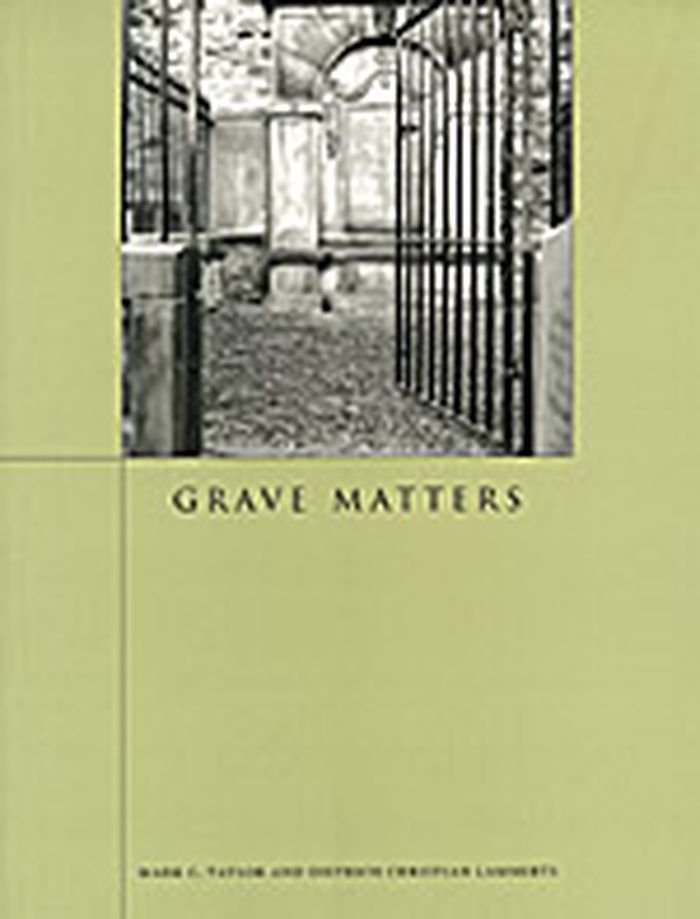books
$44.95
(available to order)
Summary:
The age of information, media, and virtuality is transforming every aspect of human experience. Questions that have long haunted the philosophical imagination are becoming urgent practical concerns: Where does the natural end and the artificial begin? Is there a difference between the material and the immaterial? In his new work, Mark C. Taylor extends his ongoing(...)
Hiding
Actions:
Price:
$44.95
(available to order)
Summary:
The age of information, media, and virtuality is transforming every aspect of human experience. Questions that have long haunted the philosophical imagination are becoming urgent practical concerns: Where does the natural end and the artificial begin? Is there a difference between the material and the immaterial? In his new work, Mark C. Taylor extends his ongoing investigation of postmodern worlds by critically examining a wide range of contemporary cultural practices. Nothing defines postmodernism so well as its refusal of depth, its emphasis on appearance and spectacle, its tendency to collapse a three-dimensional world in which image and reality are distinct into a two-dimensional world in which they merge. The postmodern world, Taylor argues, is a world of surfaces, and the postmodern condition is one of profound superficiality. For many cultural commentators, postmodernism's inescapable play of surfaces is cause for despair. Taylor, on the other hand, shows that the disappearance of depth in postmodern culture is actually a liberation repleat with creative possibilities. Taylor introduces readers to a popular culture in which detectives--the postmodern heroes of Paul Auster and Dennis Potter--lift surfaces only to find more surfaces, and in which fashion advertising plays transparency against hiding. Taylor looks at the contemporary preoccupation with body piercing and tattooing, and asks whether these practices actually reveal or conceal. Phrenology and skin diseases, the "religious" architecture of Las Vegas, the limitless spread of computer networks--all are brought within the scope of Taylor's brilliant analysis. Postmodernism, he shows, has given us a new sense of the superficial, one in which the issue is not the absence of meaning but its uncontrollable, ecstatic proliferation. Embodying the very tendencies it analyzes, Hiding is unique. Conceived and developed with well-known designers Michael Rock and Susan Sellars, this work transgresses the boundary that customarily separates graphic design from the story within a text. The product of nearly three decades of reflection and writing, Hiding opens a window on contemporary culture. To follow the remarkable course Taylor charts is to see both our present and past differently and to encounter a future as disorienting as it is alluring. Conceived and developed with designers Michael Rock and Susan Sellers.
books
October 1997, Chicago
Architectural Theory
Grave Matters
$39.95
(available to order)
Summary:
'Cemeteries', writes Mark C. Taylor, 'are where I go to commune with "my" ghosts. The journey to the cemetery is always solitary even when I am with people who are closest to me. In the graveyard, the we is dispersed and the I stripped bare.' In "Grave Matters", Taylor's ghosts become our own. His thoughtful, poignant essay interweaves personal narrative, historical(...)
Grave Matters
Actions:
Price:
$39.95
(available to order)
Summary:
'Cemeteries', writes Mark C. Taylor, 'are where I go to commune with "my" ghosts. The journey to the cemetery is always solitary even when I am with people who are closest to me. In the graveyard, the we is dispersed and the I stripped bare.' In "Grave Matters", Taylor's ghosts become our own. His thoughtful, poignant essay interweaves personal narrative, historical analysis, cultural commentary and philosophical reflection. Dietrich Christian Lammerts's photographs show us the graves of the artists, architects, writers, philosophers and musicians who shaped Western culture; at once beautiful and disturbing, they suggest an alternative history of modernism and its precursors. Grave Matters raises difficult questions: What place do the modern greats have in the postmodern age? Who decided where and how they would be buried? Who wrote their epitaphs? What do their deaths, and their graves, tell us about their lives and suggest about our own? The words and images of Grave Matters inscribe the future that we all face, and to ponder this memento mori is to meet life anew.
Food
